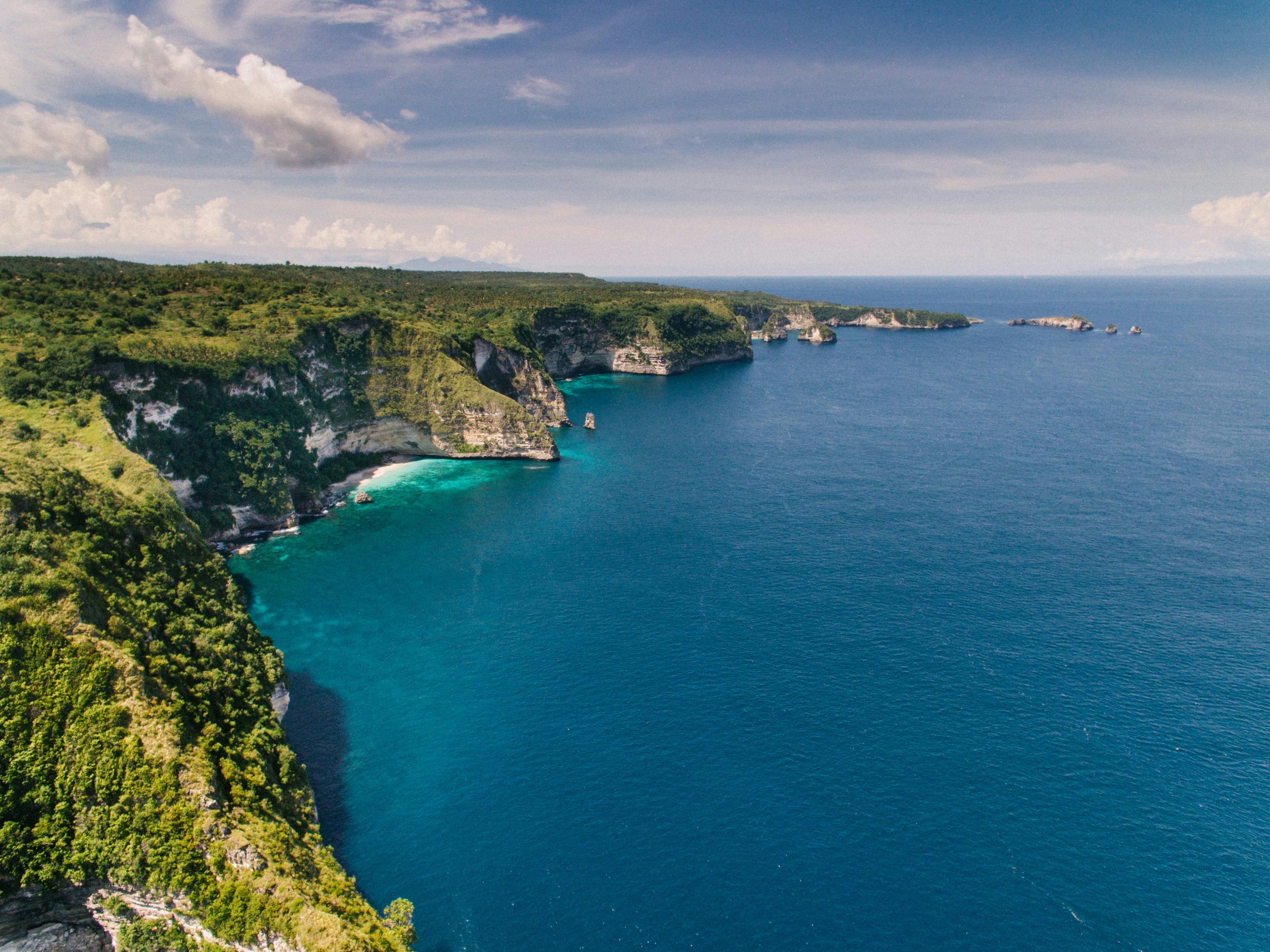
Ecological Cascade: Beyond the Iconic Species Loss
While the floating carcasses of the endangered Amazon river dolphins and the smaller, related tucuxi dolphins captured the global imagination and heartbreaking photographs, the scientific investigation made one thing perfectly clear: that mortality event was just the visible tip of a much deeper, wider socio-ecological crisis unfolding beneath the surface.
Widespread Death Among Ichthyofauna
The thermal stress was indiscriminate across the entire aquatic community. It triggered the mass perishing of countless fish across dozens of species. Fish populations aren’t just part of the scenery; they are the bedrock of the local food web and are intrinsically tied to the food security and the very economic survival of the human communities surrounding the lake.
For many of these fish species, their physiological tolerance for sustained, extreme heat is considerably lower than that of the larger, more mobile dolphins. This means the fish likely perished even before the water hit that absolute peak temperature of forty-one degrees Celsius. The deaths observed at these foundational trophic levels signal a fundamental, rapid breakdown in the lake’s entire ability to sustain life as it was previously known. The fact that the *entire* measured two-meter water column was lethal suggests that there was no thermal sanctuary—no cool spot on the bottom or in deeper pockets—leading to an almost comprehensive die-off in the most severely affected areas.
The Algal Response: A Chromatic Indicator of Stress
The ecological unraveling didn’t stop with the visible casualties; it extended right down to the microscopic level, providing alarming visual proof of the systemic stress. Researchers documented a clear phenomenon where the immense pressure placed on the primary producers—the algae—resulted in a conspicuous and unsettling bloom that physically changed the water’s appearance.. Find out more about Causes of mass dolphin deaths Lake Tefé.
This stress-induced event caused a massive proliferation of certain heat-tolerant algal species. The result? Sections of the lake water turned a distinct, alarming red hue. While the precise species responsible for this unusual discoloration was a subject for further, detailed study, the visual cue itself was a powerful indicator of a system thrown violently out of balance. Such blooms are often linked to nutrient overload, but here, they were driven by extreme thermal stress favoring fast-reproducing, heat-tolerant organisms over the balanced biodiversity that defines a healthy environment. This chromatic shift was the lake’s way of screaming that its entire biochemical machinery was being forcibly reset by conditions entirely outside the evolutionary experience of its long-term inhabitants. If you want to understand the speed of ecological change, look at the color of the water—it’s often the first place the crisis shows up. To keep track of broader research in this area, look into recent findings on tropical lake ecology.
Investigating the Anthropogenic Fingerprint: Long-Term Climate Trajectories
The scientific team understood that documenting the acute 2023 disaster, while vital for immediate response, was insufficient to grasp the full trajectory of this crisis. To put the mass mortality event into the proper context of planetary change, they initiated a retrospective analysis, digging deep into historical data.
Decadal Warming Trends in the Amazonian Basin
Scientists meticulously combed through satellite imagery and meteorological records, tracing temperature trends in the region’s lakes back to the year nineteen-ninety. This long-term view yielded a deeply concerning, statistically clear conclusion: the lakes across the Amazonian region are not simply experiencing random, isolated fluctuations. They are demonstrably warming over time.
The data showed a clear, statistically significant upward trend in the baseline temperature of these tropical aquatic environments. The calculated average warming rate across these lakes was approximately zero point six degrees Celsius per decade [cite: original text, confirmed by search result range of 0.3 to 0.8°C/decade cite: 8, 9, 10]. This long-term trend is the crucial baseline against which the extreme 2023 event must be measured. The drought didn’t cause the heatwave entirely, but it acted as a powerful, short-term amplifier on a steady, underlying warming trajectory that has been building for decades.. Find out more about Causes of mass dolphin deaths Lake Tefé guide.
Comparing Regional Warming to Global Averages
What makes this observed decadal warming rate in the Amazonian lakes so alarming is how it stacks up against global benchmarks. The rate of zero point six degrees Celsius per decade across the region’s lakes was found to be substantially higher than the average warming rate observed in many other global lake systems, and it notably exceeds the general global average for surface warming trends over the same period [cite: original text].
This finding challenges a long-held—and perhaps complacent—assumption in older climate modeling: that the tropical latitudes would experience less severe or more gradual temperature increases compared to the poles. The data suggests the tropics are exhibiting an accelerated sensitivity to global climatic shifts. It means these crucial freshwater resources are less stable than we thought.
To add a layer of urgency, the research highlighted a worrying pattern of frequency: another similarly record-breaking drought event, which caused severe heating and record-breaking low water levels, was observed in the Amazon in September and October of 2024, just one year after the initial 2023 incident. This increased frequency of extreme dry and hot periods—which researchers link directly to sustained human-caused climate change—implies that the conditions that killed the dolphins are rapidly becoming the new, perilous normal, rather than a once-in-a-lifetime anomaly. The future of Amazonian freshwater resources depends on recognizing this trend.
Human and Scientific Response to the Crisis
When the reports of mass mortality first came in, the scientific response was characterized by a grueling mix of rigorous data collection and a profound sense of urgency. This wasn’t just an academic exercise; it was an immediate environmental emergency.
The Immediate Psychological and Field Investigation. Find out more about Causes of mass dolphin deaths Lake Tefé tips.
The investigation involved everything from on-site water temperature sampling at various depths to systematic documentation of the mortality event. The lead researcher, Ayan Fleischmann, a hydrologist at the Mamirauá Institute for Sustainable Development, articulated the sobering reality of being in the field. The heat was so extreme that standard on-site testing became dangerous for humans. He noted that even momentarily touching the water was almost impossible without risking immediate injury—a non-instrumental confirmation of the lethal conditions.
The team’s experience was one of witnessing an ecosystem in acute distress. It moved the scientific work from abstract modeling into a domain of visceral, almost moral, imperative to understand and communicate the danger. This direct, painful engagement allowed the researchers to gather the crucial ground-truth data necessary to validate the complex hydrodynamic models they built later, ensuring their conclusions about the drivers of the heating were firmly grounded in observable, painful reality.
Actionable Takeaway for Understanding Crisis: When you are faced with an extreme event, remember that the most credible data often comes from direct, multi-sensory observation on the ground, even if it’s uncomfortable. Field verification remains the gold standard that validates powerful computer simulations.
Advocating for Policy and Monitoring at International Forums
Recognizing the need for global action, the study’s findings were strategically timed. They were deliberately publicized to coincide with the opening of the United Nations Conference of the Parties, or COP30, held in Belém, Brazil, from November 10 to 21, 2025. This timing was essential to link the localized tragedy directly to the global policy arena responsible for mitigating the climate emergency.
Researchers, including Fleischmann, actively used this major international platform to advocate for concrete, long-term policy shifts focused on the Amazonian aquatic environment. Their appeals centered on two critical areas:. Find out more about Causes of mass dolphin deaths Lake Tefé strategies.
- Sustained Monitoring: They urged the immediate establishment of long-term, continuous monitoring programs for the region’s lakes, moving away from the current, reactive model of investigating only after a disaster has occurred. Proactive, continuous data collection is key to predicting the next event.
- Local Inclusion: They called for the greater inclusion of local populations—Indigenous communities and non-Indigenous riverine dwellers—in the formulation and implementation of all climate adaptation strategies. These communities hold generations of irreplaceable ecological knowledge and are on the front lines of the crisis, making their participation essential for any effective, locally relevant conservation measure. Ignoring local knowledge is a critical failure in climate action planning.
Broader Implications for Tropical Aquatic Ecosystems
The Lake Tefé event serves as a powerful case study that forces a serious re-evaluation of how we view freshwater bodies in the tropics. It’s a narrative about a system pushed beyond its breaking point.
The Overlooked Vulnerability of Tropical Lakes
A significant meta-narrative emerging from this research is the historical scientific neglect of tropical inland waters in global ecological study. For a long time, scientific focus and funding for limnology—the study of inland waters—was disproportionately skewed toward the temperate lakes of Europe and North America. The implicit assumption was that tropical lakes existed in a relatively stable, predictable climatic envelope—an assumption the Lake Tefé disaster has definitively shattered as of 2023.. Find out more about Causes of mass dolphin deaths Lake Tefé overview.
The resilience of these systems to rapid, intense temperature shifts appears to be far lower than previously estimated, especially when faced with the increasing frequency and severity of extreme drought coupled with human-induced background warming. The vulnerability demonstrated here means the threat of aquatic ecosystem collapse in the tropics is not a distant possibility; it is immediate and severe, demanding an urgent rebalancing of global research priorities to better understand and safeguard these highly biodiverse yet tragically understudied water bodies. We must prioritize scientific research funding for these vulnerable areas.
Future Projections Under Continued Climatic Instability
The conclusion drawn by the scientific community is sober and direct: absent significant, immediate global mitigation efforts, the conditions that led to the mass dolphin mortality are set to become far more frequent and severe. As global average temperatures continue their upward trajectory due to sustained greenhouse gas emissions, the frequency of temperatures that exceed the thermal tolerances of delicate aquatic life will inevitably increase across all tropical freshwater systems.
The findings underscore a vicious feedback loop: rising global temperatures drive more intense regional weather patterns like droughts, which in turn create extreme local conditions like hyperthermia in shallow waters. For the Amazon, this means the delicate balance of its vast network of rivers and lakes will be perpetually tested. The research is a stark, undeniable declaration that the climate emergency is not a distant future scenario for these vital ecosystems but an ongoing, observable reality, fundamentally altering the physical parameters that permit life to flourish.
That long-term warming trend of zero point six degrees Celsius per decade, confirmed by satellite data, suggests that the capacity for the ecosystem to recover between these extreme events—like the 2023 and 2024 droughts—is rapidly diminishing. This paints a deeply concerning picture for the persistence of the Amazon’s unique and irreplaceable biodiversity.
Key Takeaways and Actionable Insights for a Warming World
The Lake Tefé tragedy wasn’t just a sad story about dolphins; it was a physics lesson written in scalding water. Understanding the mechanism is the first step toward prevention.. Find out more about Water temperature 41 degrees Celsius Amazon lake definition guide.
Key Learnings from the Thermal Spike:
- Shallow Kills: The primary mechanism was the loss of thermal inertia due to extreme water level reduction, turning a deep lake into a shallow basin easily heated by the sun.
- The Four Traps: Extreme heat accumulation was caused by the synergy of high solar input, shallow depth, low wind (preventing evaporation), and high turbidity (trapping heat).
- Tropical Vulnerability Confirmed: Amazonian lakes are warming faster than the global average, proving that tropical freshwater systems are highly sensitive sentinels of global warming trends.
- Frequency is the New Danger: The recurrence of a near-identical extreme drought event in 2024 confirms that these are escalating risks, not isolated incidents.
What Can Be Done Now? (Actionable Insights)
While national and international policy changes are necessary, there are immediate, actionable insights we can draw from this scientific breakdown:
- Prioritize Water Volume Management: Any adaptation plan for drought-prone areas must focus on preserving minimum water volumes in critical water bodies, as volume is the ultimate thermal buffer.
- Focus Monitoring on Wind and Turbidity: For future climate risk assessment in similar tropical lake systems, monitoring wind speed and water clarity (turbidity) alongside temperature and water level is crucial for early warning systems.
- Support Local Knowledge Networks: Policy advocacy must prioritize funding and platforms for Indigenous and riverine communities, as their historical observations are invaluable for creating effective, localized resilience plans.
The story of Lake Tefé is a siren call for the world’s under-studied tropical waters. The days of assuming stability are over. The question for us, as we stand on the cusp of COP30 in Belém, is whether we will heed the warning from the water that boiled, or wait for the next basin to turn into a simmering grave.
Call to Action: Are you tracking the outcomes of COP30 in Brazil? Share your thoughts on what the international community must prioritize to protect vulnerable tropical freshwater systems like Lake Tefé in the comments below. What policy change do you think would have the biggest impact?










